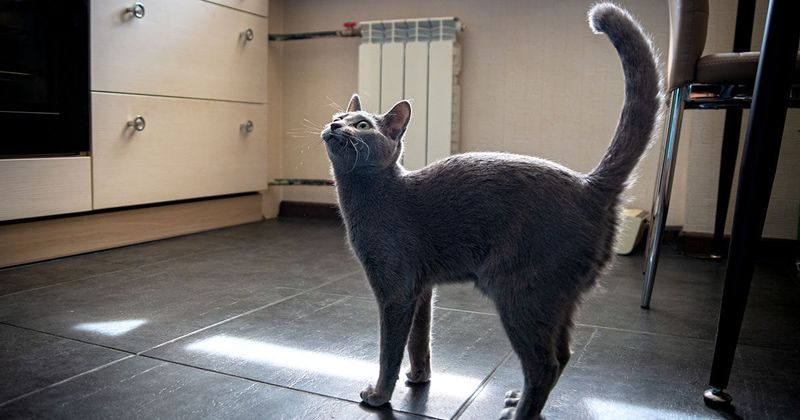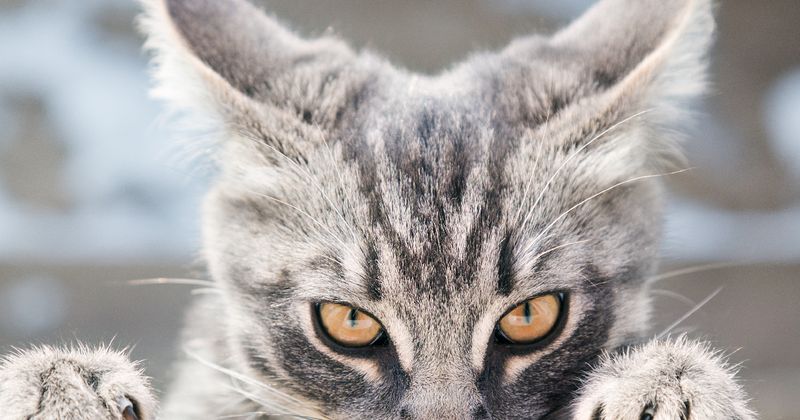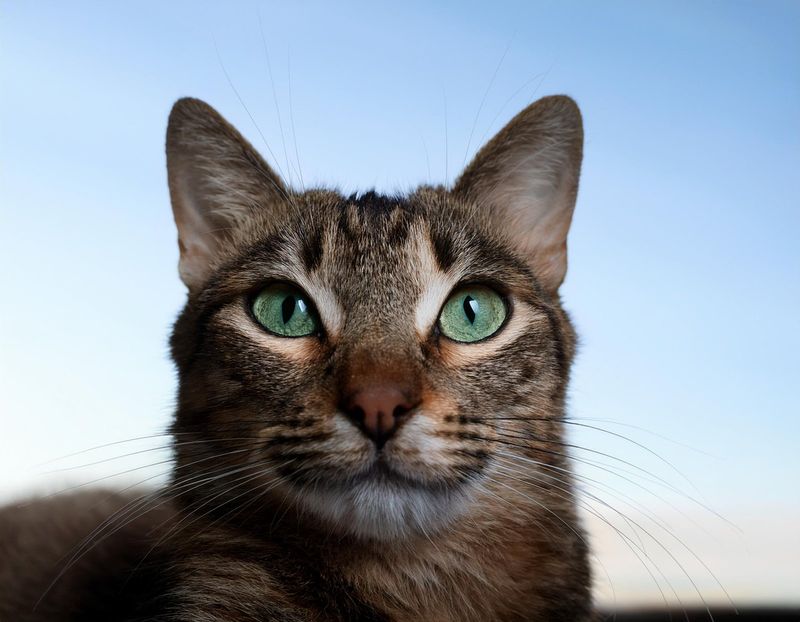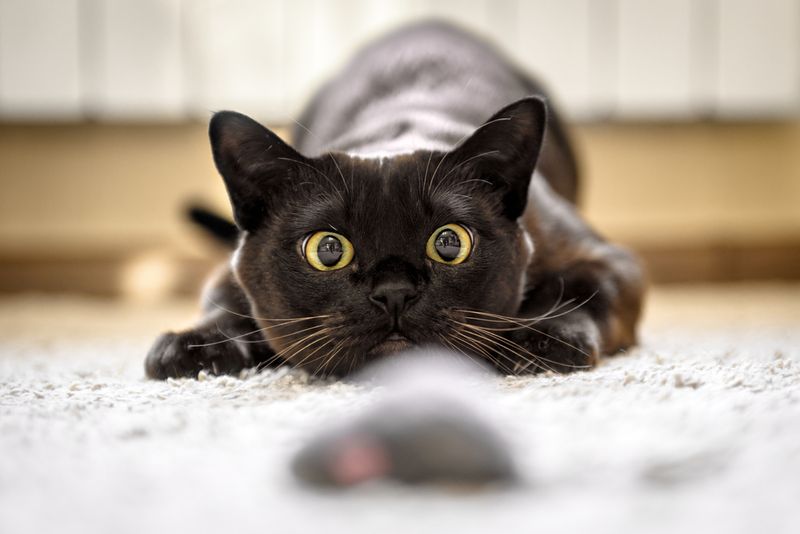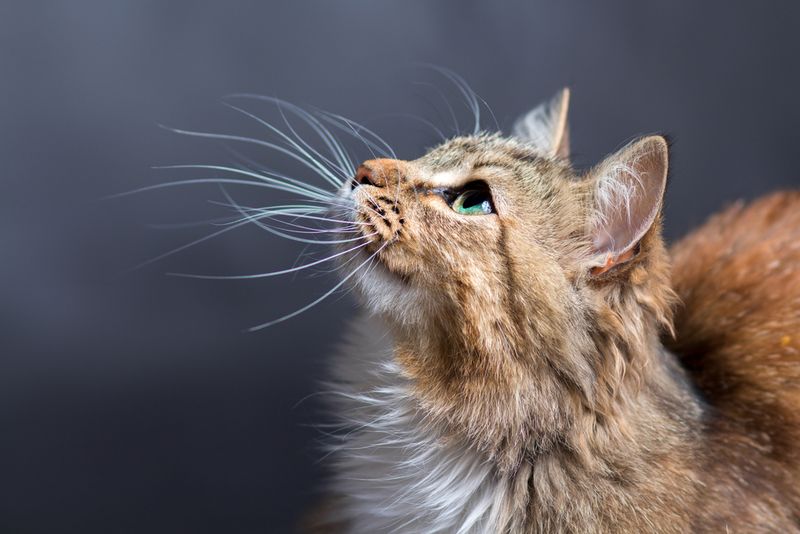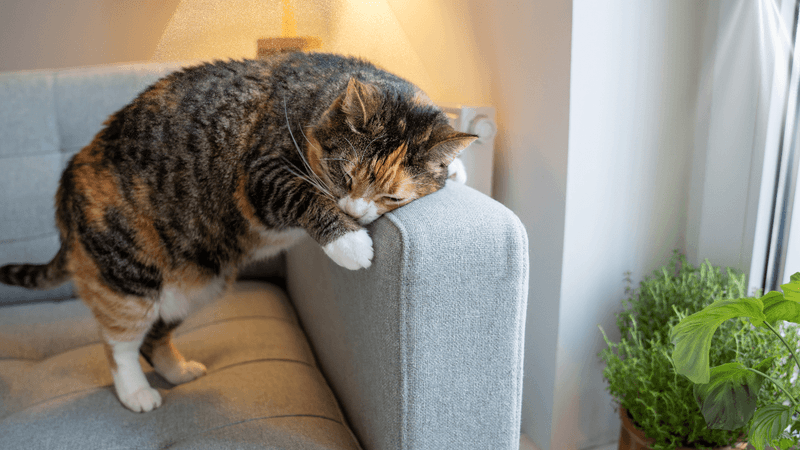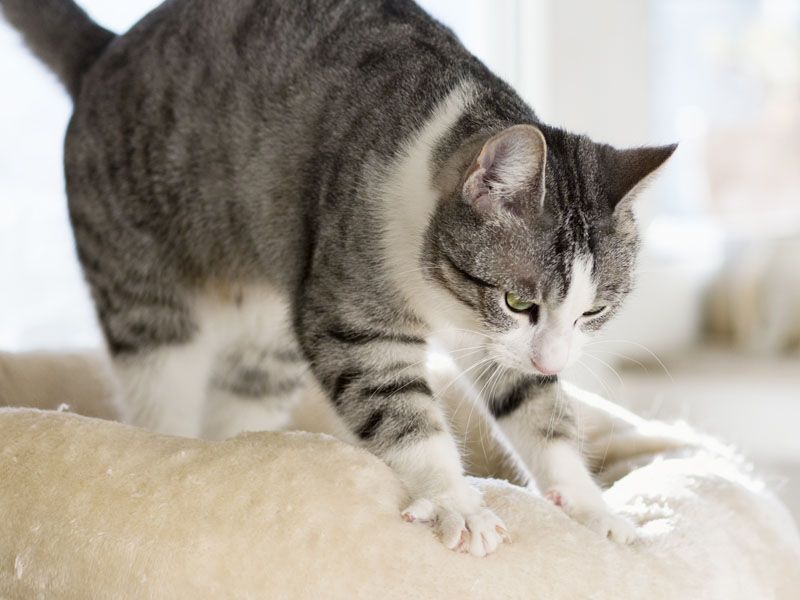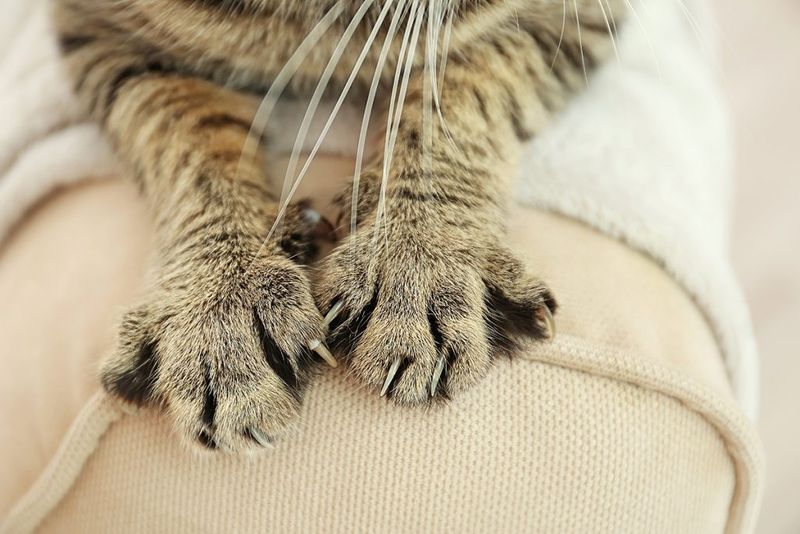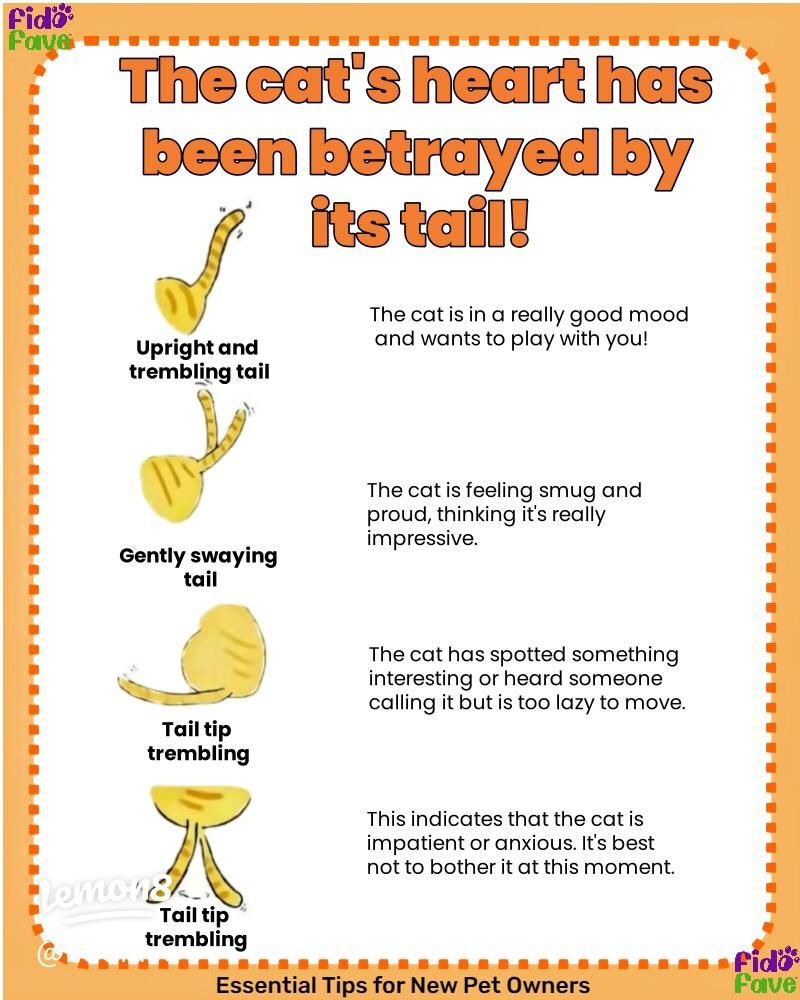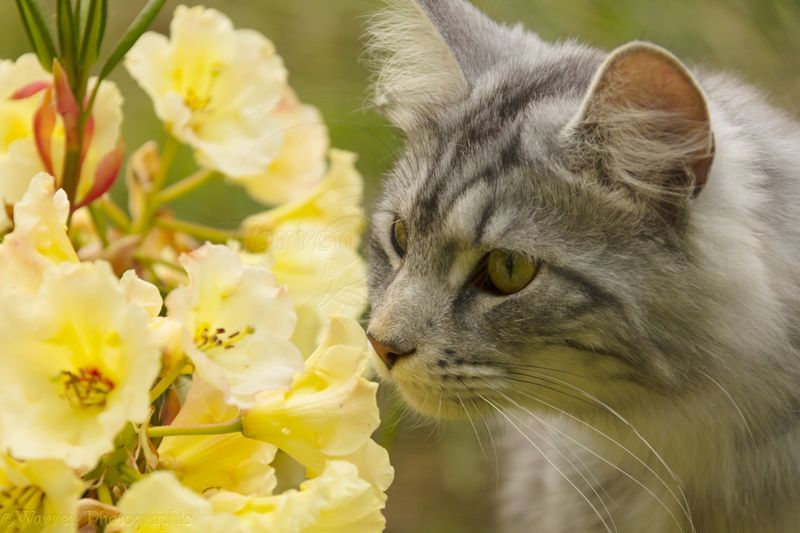📖 Table of Content:
Understanding your cat’s body language is essential for interpreting their emotions and ensuring their well-being. Cats communicate a wide range of feelings through subtle physical cues. Here’s how to read and understand your cat’s body language.
1. Tail Position and Movement
A cat’s tail reveals its inner world. When a cat’s tail is held high with a gentle curve at the tip, it exudes confidence and happiness. This position often resembles a question mark, inviting interaction. If the tail is tucked between the legs, it signals apprehension or submission. A puffed-up tail, on the other hand, is a clear sign of aggression or fear, often making the cat appear larger. This defensive posture is instinctual, aimed to ward off potential threats. Playful flicks and twitches indicate excitement or curiosity, particularly during interactive play or when observing moving objects.
2. Ear Position
Ears are a cat’s radar. Forward-facing ears denote curiosity and attentiveness, like when a cat observes a fluttering butterfly. Flattened ears, pressed back against the head, suggest fear or aggression, akin to when meeting an unfamiliar animal. Sideways or backward ears can be a sign of unease or uncertainty, often noticed when a cat is caught in a new environment. This subtle communication is pivotal in understanding your cat’s mood and readiness to engage. Cats often adjust their ear positions rapidly in response to surrounding sounds, making ear observation a dynamic aspect of feline body language.
3. Eye Expression
The eyes, they say, are the windows to the soul, and in cats, they reveal much more. A cat with relaxed eyes, half-closed eyelids, and normal-sized pupils is content, possibly basking in the sun. However, dilated pupils can signal excitement or fear, much like a sudden change in environment. The famous slow blink is a cat’s way of showing trust and affection, a gesture you can reciprocate to strengthen your bond. Cats’ eyes are expressive, and reading them correctly can deepen your understanding of their emotional state. Observing these cues allows for harmonious human-cat interactions.
4. Body Posture
A cat’s posture is a narrative in itself. When a cat is sprawled on its side or back, limbs comfortably extended, it conveys trust and contentment. However, a crouched or tense pose indicates fear or anxiety, possibly in preparation to flee or defend. An arched back with standing fur, known as piloerection, is a defensive posture, making the cat appear larger and more intimidating to potential threats. Understanding these postures helps in discerning a cat’s comfort level in different environments, ensuring a safe space for them to express themselves freely without distress. It’s a silent story of emotions.
5. Whisker Position
A cat’s whiskers are more than just facial adornments; they’re sensory tools. When whiskers point forward, they indicate curiosity or interest, such as when inspecting a new toy. Conversely, flattened whiskers can suggest fear or aggression, often seen during encounters with strangers. These tactile hairs are sensitive to touch and vibrations, playing a significant role in a cat’s spatial awareness. Observing whisker positions can provide insight into your cat’s intentions and current emotional state, allowing you to respond appropriately. It’s a fascinating aspect of feline physiology, revealing underlying emotions through subtle movements.
6. Vocalizations
Cats are vocal creatures, and their sounds offer a glimpse into their emotions. Purring often signifies contentment, as when a cat lounges in a warm spot. However, it can also occur when a cat is anxious or in pain, acting as a self-soothing mechanism. Meows are typically directed at humans, expressing needs like hunger or a desire for attention. Hissing or growling is a clear warning that a cat feels threatened or aggressive, urging caution. Each vocalization type serves as a unique channel of communication, helping to decode the complex emotional landscape of your feline companion’s world.
7. Grooming and Other Behaviors
Grooming is more than mere hygiene; it’s a window into a cat’s emotional state. Excessive grooming may indicate stress or anxiety, a behavior seen in unsettling environments. Conversely, kneading, a motion resembling dough preparation, stems from kittenhood, signifying comfort and contentment. This behavior often accompanies purring, especially when a cat feels safe. Observing grooming habits offers insights into a cat’s stress levels and environmental comfort, providing clues to their overall well-being. These behaviors, while seemingly mundane, carry profound emotional significance, reflecting the inner workings of your feline friend’s mind and their interaction with their surroundings.
8. Paws and Claws
Paws are tools of both tranquility and defense. When a cat stretches its paws and extends its claws gently, it’s often a sign of relaxation and satisfaction, similar to a human’s morning stretch. However, claws become defensive weapons when a cat feels threatened, showcasing readiness to protect itself. Observing these transitions provides insight into a cat’s comfort and alertness levels. This dual nature of paws and claws highlights the intricate balance between relaxation and defense in a cat’s world. Understanding this balance aids in predicting a cat’s reactions to various situations, enhancing human-cat harmony.
9. Tail Talk
The tail is a versatile communicator. When a cat’s tail sways gently side to side, it often signifies thoughtfulness or mild curiosity, akin to a human pondering over a decision. A twitching tail can suggest irritation or heightened alertness, perhaps in response to an unexpected noise. Recognizing these movements helps in understanding a cat’s immediate intentions and emotional state, offering guidance on whether to approach or give space. This tail language, though subtle, is a powerful tool for predicting a cat’s mood. Observing tail dynamics is key to fostering a deeper connection with your feline companion.
10. Nose and Sniffing
A cat’s nose is a gateway to its world. When a cat sniffs the air, it’s gathering information about its surroundings, much like reading a daily newspaper. This sniffing behavior is both inquisitive and cautious, revealing a cat’s interest in unfamiliar scents or changes in its environment. Understanding this sensory exploration can provide insights into a cat’s comfort level and adaptability to new situations. The nose is a vital tool for survival, helping to detect food, threats, or companions. Observing sniffing behaviors enriches the understanding of a cat’s interactive and reactive nature.

